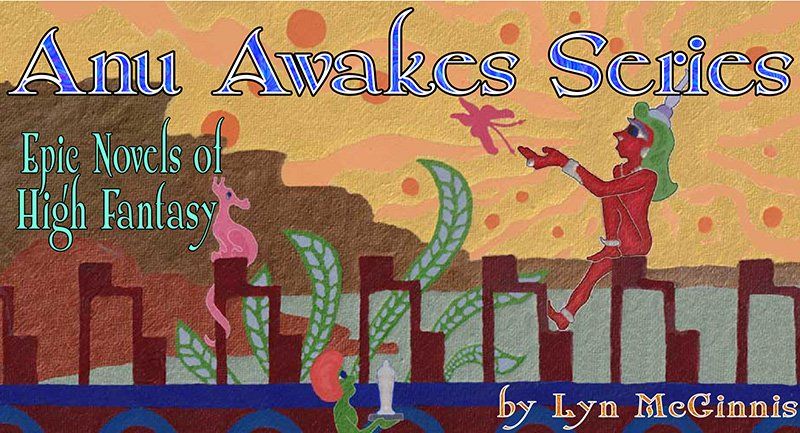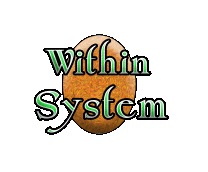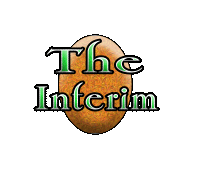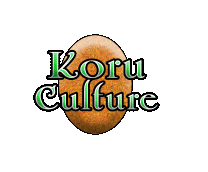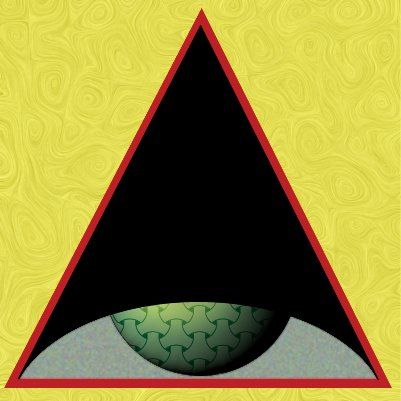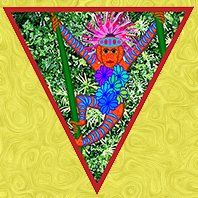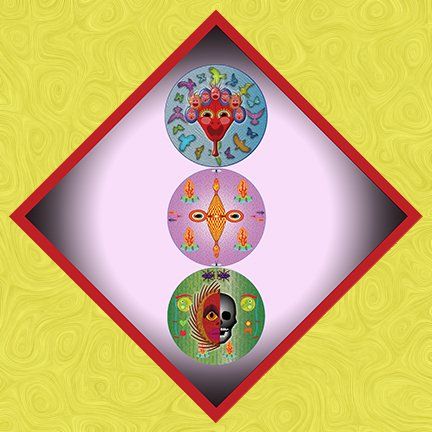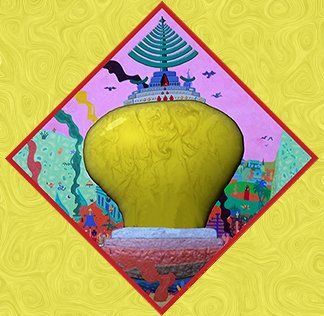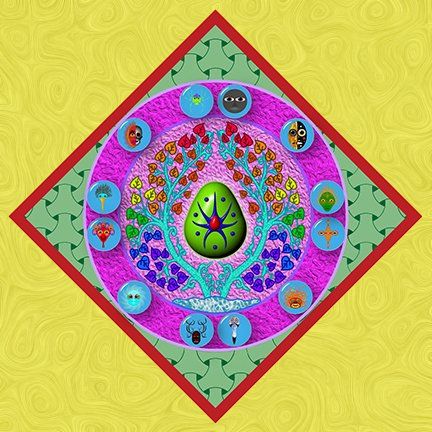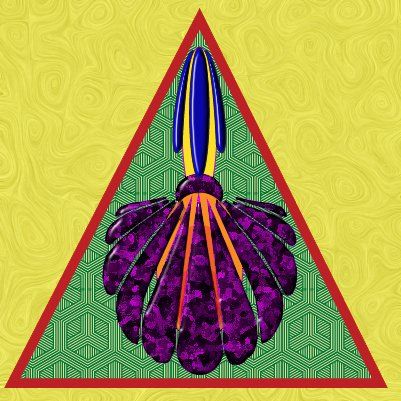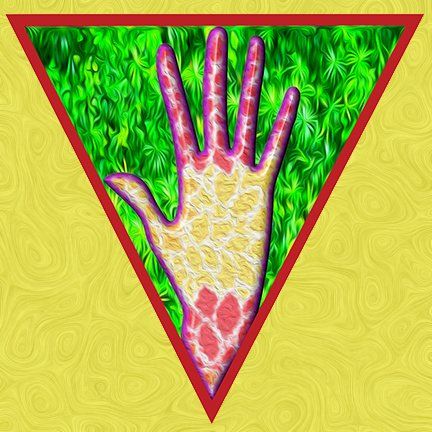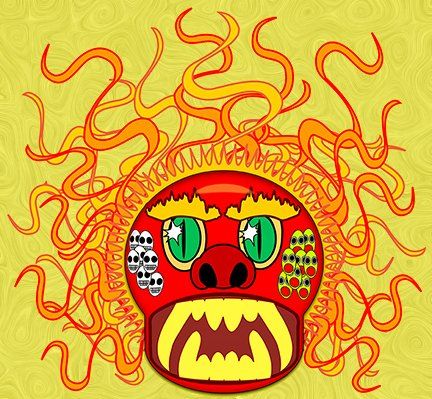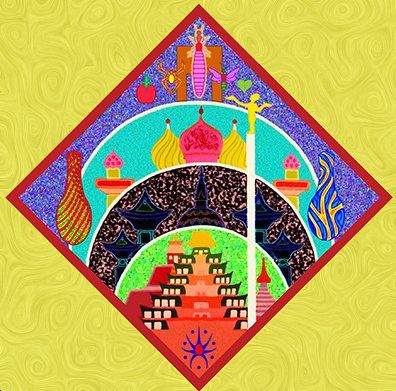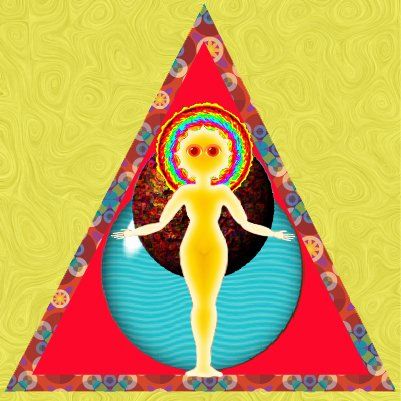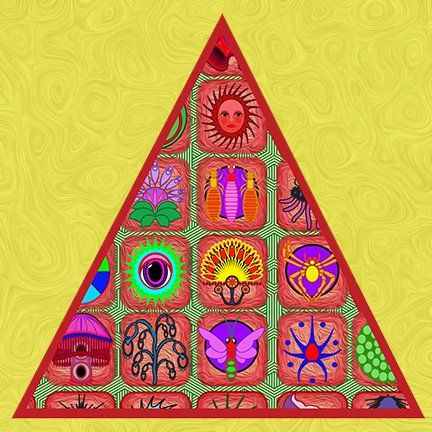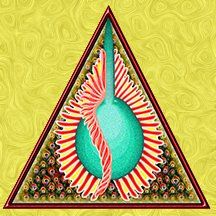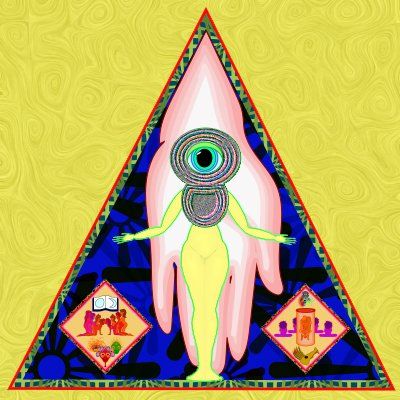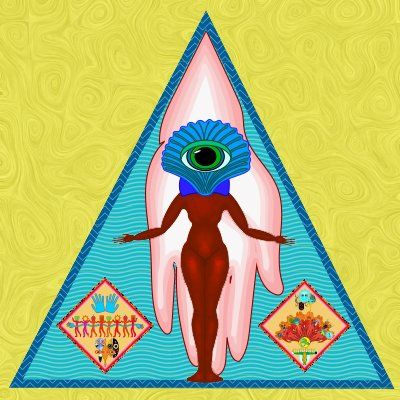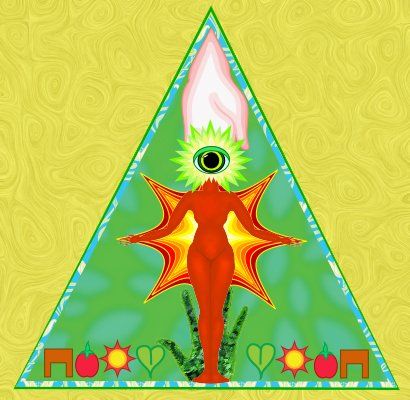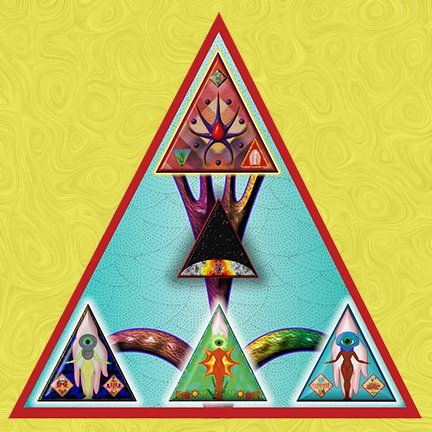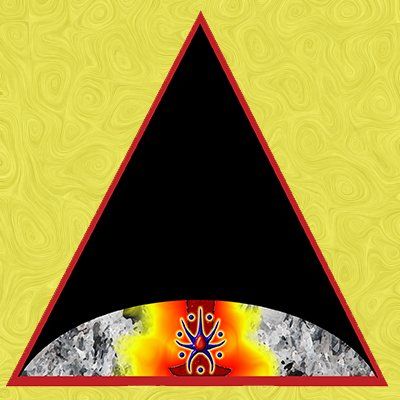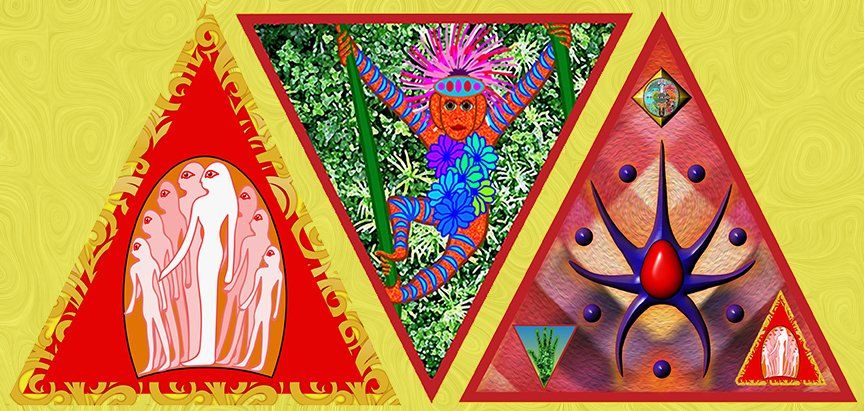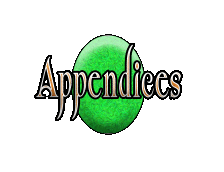
This was one of the more fraught topics on Anu during the Secondary Epoch. The paramount event is known as ‘The Killing Swath,’ the ‘Rectification,’ and the ‘Ultimate Panacea.’ This monumental incident terminated the Tolku's Cluster-of-Clusters civilization and led to the seven-hundred-year period known as The Interim. The Suvuka destroyed most of the Primary Epoch’s patrimony during this time. Such was the impact of this global incident that, for generations, confusion continued to surround its very nature. Two secondary occurrences, known as the ‘Lesser Rectifications,’ revealed much about these prodigious episodes and how they impacted subsequent history.
Greater Rectification
Cascading errors, Ultimate Panacea, Embracing fate, Yakku rejection of this narrative, Origins of the name
Tolku Final Proclamation
Initial discovery, Proclamation context, Three Faces in ‘Killing Swath Formation,’ Fortuitous discovery of Amarel Mountain at the same time, Seven stanzas
Proclamation Analysis, First Stanza, Second Stanza, Third Stanza, Fourth Stanza, Fifth Stanza, Sixth Stanza, Seventh Stanza
Skin of Anu marked
Swath effect on the Skin of Anu, Guardian’s journey, Incremental forgetting, No witness accounts, Obscure references to the Island of Lewetar, Quickening after Rectification, Swath changes, Koru Change, Yakku Change
Tatchlan changed
Swath effect within the Living System, Role of Hesha Vira, Three layers of System distorted, Operants bridge the divide, Breathing Seals Conglomerations, New Conglomerations Theory
Management of Swath lore
Laying the taboo, Enquiries lead to madness, Mystery of Zudaz I early death, Belief Swath caused by a Second Majastas
Lesser Rectifications
Tich-Tushmul in Yeldic history: Separate existence, Three Classes, Koru bulletins, First Yelda on Tich-Tushmul end in flames, The concept of ‘Lesser Rectification,’ Second Yeldic island civilization, Early years, Swift arrival of first Majastas, Island Majastas brief lives, Koru Majastas gathers all Invocates, Yeldic Rectifications manifest as Tree within Tatchlan, Yeldic Body’s malaise before the lancing, Island Majastas knew their role, Majastas Radashum-Nal, Tich-Tushmul Patrimony, Violence slumber and awakening, Taskforce dispatched
Yeldic Majastas Radashum-Nal declaration
Tich-Tushmul Rectification Document, Four Stanzas
First Stanza: General of Interior Command Vaxo-Mund, Second Stanza: Tich-Tushmul has known much sorrow, Third Stanza: We launch the future, Fourth Stanza: Farewell
Killing Swath's role in Secondary Epoch
Forge for Koru Yakku and Yelda, Lesser Rectifications key to Yeldic development, Eight dynasties Generational Plans, Mundane Yelda dominate Rectification Studies
Greater Rectification
Cascading errors
In the final Aeon of the Greater Era of the Primary Epoch, a crisis grew monstrously within Tatchlan. It had been determined that many minor dysfunctions and misalignments had begun to merge and aggrandize at an alarming rate.
This calamity had modest origins, commencing in the sixtieth Aeon of the Greater Era during the reign of the Voltumnam Dynasty. This is now judged to be the midpoint of the Primary Epoch. The source was the transition period between what had previously been known as the beneficial Blossom to its later menace as a Burning Blossom. The Living System suffered many tiny flaws before its complete sealing from Nu ’s increasingly hostile gaze. While many healed, some grew malignant and proliferated in hidden corners for millennia.
Most of these deep matters cannot be recounted adequately. One issue among many may be briefly described here, although the result is a shallow generalization. Manifold channels lead to tubes allowing for offscourings from what is commonly called the ‘Living Orb’ to drain down onto the surface of Indatubangus for rendering. Many of these channels narrowed over hundreds of millennia and became plugged and atrophied.
This was a sufficiently slow and subtle process to go unnoticed initially. As with many other disorders, this manifested widely all at once, presenting a considerable challenge to remedy. Individual Majastas made repeated attempts, and then entire dynasties enacted hundreds of thousands of ‘Corrections’ with some isolated successes. Yet they found themselves overwhelmed by the increasing scope of these multiplying correlative errors. A new dynasty launched an ambitious series of Epochal Generational Plans that would outlive its long-lived members and those of succeeding dynasties. Notwithstanding the heroic efforts of all these Majastas and their Operants and Invocates, the growing chorus of abnormalities and impairments pointed toward the one unthinkable solution.
Ultimate Panacea
The only remedy for the growing conflagration was a complete discontinuance. This was named the conclusive form of Correction - a Rectification, also called the ‘Ultimate Panacea,’ was necessary. Despite its unprecedented nature, there was sufficient understanding to know such a falling and to rise to realize it would lead to a general loosening of all knots and a purging of all imbalances. The result would be a gentle reconstruction of the three layers with considerable free elements circulating until they gradually returned to their proper stations. While there was a certainty that Tatchlan would eventually be able to rouse itself in a Second Quickening, this last anguished measure was fraught with many dangers. With the Greater and Lesser Rectifications, there was no way to achieve what was necessary without the inevitable breakdown of the entire Cluster-of-Clusters Nation and the mass termination of most clusters and instruments. At this determination, the Tolku Proclamation (see below) was distributed. Above is one of the earliest icons fashioned during The Interim. It shows the old word of the Primary Epoch, with its vast and intricate harmonies, being eclipsed.
Embracing fate
The original Killing Swath ending the Primary Epoch and the secondary Rectification ordeals of the Secondary Epoch on the Island of Tich-Tushmul could not have been accomplished without the general population's willingness. Their acquiescence opened doors within Tatchlan that could not otherwise be breached. They attest to their respective Cluster-of-Clusters Nations’ desire to give up their lives to ensure Tatchlan recovers and continues to be in renewed strength. In doing so, they affirmed the most-ancient Uluvatu Masters‘ supreme legacy was the culmination of their best aspiration and genius. It was also the ultimate defeat of Self-Absorption. Thus, these last generations are deemed Exemplars of nobility, courage, and resolve unknown before the arrival of Tatchlan on Anu. This global dignity and steadfastness was on display again during the Tertiary Epoch.
Yakku's rejection of this narrative
The early Yakku soundly rejected this portrayal of events. The notion of the Tolku population willingly sacrificing themselves for the sake of Tatchlan contradicted the growing rendering of their history as one of liberation from the excesses of the Tolku’s devotion to the Tatchlan System. They went so far as to label this an ‘abhorrent doctrine.’ Late in the Secondary Epoch, with the Danam Yelda healing the rift between Koru and Yakku, they could view the evidence inside and outside Tatchlan. Eventually, they let go of their beliefs about the cause and meaning of the Rectification.
Origins of the name
The term ‘Killing Swath’ arose among the First Generation of Guardians before they reached the Sanctuaries within the Mulungu Mountains of Rho-Jashun. It is presumed to hint at the horrors the survivors found during their journey to the Sanctuaries. This expression continued into the early Secondary Epoch until the discovery of the final Tolku Proclamation (see immediately below). Honoured Historians and Venerable Scholars then set it aside and referred to the event as the Panacea or Rectification. When a similar episode occurred in the year 48,558 UKC on the Tich-Tushmul Island, it was referred to as the ‘Lesser Rectification,’ and the event dividing the Epochs as the ‘Greater Rectification.’ By this time, a large body of drama and song ensured the historic appellation ‘Killing Swath’ continued in general usage.
Initial discovery
In the year 286 of the Secondary Epoch, on Day 220 of Two-Week 13, known as Rakal or the ’Basket,’ within the Parayad Treasury inside Kodrapum Grotto in Mount Arnom, the one thousand and first crate of this collection was opened. This was the sixth of the fixed ten-per-year quota to be examined. One thousand and sixty boxes remained in their niches. They would be approached with exceeding care by subsequent generations. Initial inspection revealed an unusual find: an excellent piece of treated Danta skin, known as Culsu, covered in illuminated text, lay beneath the customary clay tablet detailing the crate’s contents. It is speculated this was not an intended part of the materials but was laid in haste before the crate's closing. Given the nature of this document, this crate is likely the last to be sealed before the Killing Swath. Readers witness this historic event in the pages of the series' second novel, Amarel Mountain.
Proclamation context
Much study has taken place over each word and letter, along with the colouration and iconography found in this unique document. The consensus is this was the last of a series of proclamations produced in substantial quantities to be sent to all provincial centres for dispersal throughout each province on all three continents. None of the previous dispatches survive. This single item, laid in haste in a Treasury crate, is the only copy of the final member of what must have been a sombre series. Internal evidence suggests significant initiatives were set in motion, and more ambitious preparations were about to commence.
Three Faces in Killing Swath Formation
Along the left side of the document were three icons of Principal Faces of Tatchlan. Kava-Kura, the Face of Vital Delight, was at the top, her image surrounded by a circular design known as an ‘aura,' commonplace in the late Primary Epoch, composed of a circular flock of birds and butterflies. Below her was Humma, the Face of Recollection. Humma’s aura comprises a shaded pink ground with four images known simply as ‘flaming hands’ and certain members of the Ketukku insect nation at the cardinal points. Below him was Sukakap, the half-living and half-dead Face of Truth, encompassed by a green aura containing the most ancient agricultural emblems. This was an unusual configuration and, in time, became known as the ‘Killing Swath Formation.’
The Primary Epoch icon border style displayed here was framed in the Secondary Epoch to contain this formation. It has been noted elsewhere that these images, despite containing paramount Tatchlan imagery, are not true icons but only emblems. While of significant interest, this image has no power to ‘Summon.’
Such items are rarely framed within an iconic border. Still, an exception is made due to the unusual nature of their use both for the Proclamation and on the preserved hand of Tich-Tushmul Yeldic Majastas Radashum-Nal after the second of the ‘Lesser Rectifications’ (see below).
Fortuitous discovery of Amarel Mountain at the same time
History has recorded several unlikely confluences of incidents. Yet, few can match the uncovering of this Tolku Proclamation document within Mount Arnom on Rho-Jashun, which took place almost simultaneously with the reclamation of Amarel Mountain and the entire most-ancient site of Bhampay on Statos-Vey. Due to this remarkable archeological find, several otherwise ambiguous Proclamation passages were immediately made clear, paving the way to a fuller appreciation of the significance of the entire document.
An example may be found in the First Stanza of this Proclamation. This site allowed the rediscovery of another ancient cultural practice lost during The Interim - the employment of Dream Guides.
Seven stanzas
Venerable Scholars chose to classify the document as composed of seven stanzas. Throughout subsequent millennia, generations of those possessing sufficient depth have based extensive analysis on all portions or just one of these stanzas. There are also many detailed comparisons between this and the Tich-Tushmul Rectification Document. Following the presentation of the text, the briefest summaries of each stanza’s analysis will be provided.
'IN the two thousand, nine hundred and ninety-ninth millennia, we Tolku spill ourselves for the sake of Tatchlan. Bhampay shall empty, in preparation for filling, while our Tribute Chamber and Dream Guides are made safe for the heirs. Commit to memory this final proclamation before destroying it.
'THE matter is beyond doubt. Our generation's feet shall be the last Anu knows. In future ages, Nu shall seek us in vain. Our resources shall be diverted to a single purpose prior to the end. We must plant our seeds ahead of the coming storm. These kernels shall quicken so our Guardians may survive privation and assault. These terrible acts alone shall ensure the Rectification. Within the sheltering mountains, our legacy shall endure.
'EACH Maja returns from their Gatherings with detailed instruction. Each cluster must prepare to serve the final use of the Tolku. All our love, pride and hope are needed to lay our treasure within its cradle. Once the Keys are hidden and the mountains planted, remove yourselves from the coasts. Resettle within the interior of the three lands. There, our Cluster of Clusters shall dwindle, and our circles lie down together. The few rising shall know their uses, find each other and journey to the Sanctuaries.
'LET go of all but the essential. Love each other more. Pamper your Elders, comfort and nurture your children. Each honour and dignity shall be observed among us until only the Guardians remain. Our Cousins shall be released with hidden directives. Our Servants must endure their solitude with patience. Both shall waken when our heirs call them by name. Each Bowvow Tree shall be swollen, lake of Hungry Rock surfeited. Even the Consumption Monoliths shall aid us.
'MAY your laments be mixed with adulations. Much shall be lost while the most valued endures. By our ending, our Living System shall begin again! For naught less, do we end our civilization and empty ourselves.
'OUR Majastas, Majastases and Multitudes have striven to extend and fortify our Resplendent Legacy ahead of this day. Many vital Corrections have given countless generations peace and happiness. It falls to us, within this generation, to offer our final surrender to this unavoidable Rectification. Impartial Love and Caring, which sustained us through all our generations, shall recede. Self-Absorption shall display its ignoble face again. By granting it victory now, we ensure its ultimate defeat.
'OUR beginnings were deserving of praise and our lives of emulation. Now let our end be worthy of remembrance.'
Proclamation Analysis
The most general of summaries of all scholarship on this artifact concludes what is popularly known as the Killing Swath was brought about by the last Tolku Majastas to ‘rectify’ many terminal maladies accumulated throughout the Living System during the Primary Epoch. It suggests the population widely knew this. They took these final actions to save what little they could for the benefit of the civilization to come after them. These ‘Guardians’ were the surviving Tolku, who became the first Koru of Rho-Jashun and Yakku of Thermistal during The Interim. All evidence points to these two now distinct populations, with their different proportions and living habits, as the two new versions of Tolku arising after the Killing Swath. Culturally, the Koru remained steadfast in the Living System and nurtured it back to life, while the Yakku mostly turned their backs on their Tolku legacy. Bolstering this interpretation was another document, the ‘Yeldic Majastas Radashum-Nal Declaration,’ produced by the final Yeldic Majastas of the Island of Tich-Tushmul, (as detailed in the third novel, Dalinantu Emergence), who appears to have implemented the same terrible agency within Tatchlan just for his island population. What follows is the briefest possible summary of each of the Seven Stanzas.
First Stanza
This establishes the setting and finalizes the terrible purpose the population must dedicate themselves to. Their mission was nothing less than saving Tatchlan, and their likely fate was clear. It explicitly referred to Bhampay's massive initiative. The text also declared this was the final of a series. It suggests a convention of destroying it upon the general digesting of its contents. Much speculation has been made as to this protocol. Why was it enacted? Why did one copy find its way into an unrelated crate in the Parayad Treasury?
Second Stanza
There is a hint of prior debate as to how best to proceed. A grim certainty follows this in the present moment. All see that the Tolku Cluster-of-Clusters Nation is about to end, and the population must participate in safeguarding Tatchlan’s legacy and its termination. Allusions are made to the setting up the Sanctuaries, which must have been excavated long before this point, and the strategic placing of aides to access them. It appears the storage chests of the First Generation of survivors found in the Sanctuaries were stocked at this time. There is a reference to both 'privation' and ‘assault,’ making clear some foreknowledge of the inevitable arrival of the feral Suvuka.
Third Stanza
The role of Maja Gatherings is alluded to before a series of exhortations to maintain Cluster Virtues. Everything was to be sacrificed for the future survival of the Living System, presented as preparing a newborn infant’s cot. Conjectures and many theories surround why the population was to move into the interior of their respective continents. There are reassuring summaries of what would happen before the end. Survivors learn what to do upon rising from a slumber their cluster mates could not.
Fourth Stanza
Again, the Cluster Virtues are evoked as the template for the final days of the population. We see mention of the modifications to Cousins and other Living Servants. Due to other evidence, significant work appears to have been done to the Varku and Krall within Tatchlan during this time. This allowed for their vital service to the Guardians. There is also an allusion to the Guardians possessing key commands that would unlock internal capacity in Cousins and others. This is followed by predictions that Bowvow Trees, Hungry Rock ponds, and Consumption Monoliths would serve this last generation. Many hypotheses have been advanced about what manner of service was referred to without a final consensus.
Fifth Stanza
This is the second-shortest stanza, at thirty-six words. It is meant to comfort the hearers about why they offer their lives and laud the nobility of their actions.
Sixth Stanza
This is the most contentious of all the stanzas due to the fact not only the terms ‘Majastas’ and ‘Majastas Multitude’ are evoked but also the unorthodox term ‘Majastases,’ suggesting more than one Majastas alive at the same time. In the Secondary Epoch, the Koru and Danam Yelda each have their own Majastas; their demarkations are set out to the point where the Koru Majastas are active at night and the Danam Yeldic Majastas during the day. This institution, known as the ‘Two Majastas Hands,’ could not have existed in the Primary Epoch.
An additional unlikely coincidence occurred shortly after the discovery of this Proclamation and the Bhampay site. Only three years later, there was a further discovery of the untouched ruins of the Tolku city of Turace near fourteen thousand andas west in southern Rho-Jashun. Within a deliberately sealed chamber, a unique artwork was found that is now one of the most reproduced pieces from the Primary Epoch, known as ‘The Turace Royals.’ Analysis of this work compelled the conclusion that this is, in fact, a portrait of two Majastas, not only existing at the same time but also in intimate relations with each other. This artwork and the seemingly casual reference to plural Majastas in this stanza have caused considerable academic debate.
The remainder of this stanza refers to work within Tatchlan to prepare for this dramatic event. It also refers to all the work that went before previous dynasties. These were attempts to avert, or at least forestall, the now immanent Panacea. This was now seen as unavoidable. This stanza suggests the likelihood that the affliction will see a temporary breakdown in the social order, only to have it more powerfully reinstated. It implies giving Raw Life free reign will ensure Tatchlan will be victorious.
Seventh Stanza
At nineteen words, this is the briefest of the stanzas and appears intended to fortify the courage and purpose of those hearing it.
Swath effect on the Skin of Anu
It has been speculated that the reason for the immense death toll among the Tolku and their servants implied their complete immersion within the Living System. Their linkages were such that when Tatchlan was brought to a halt by the Ultimate Panacea, before the Second Quickening, a majority of Tolku and a large proportion of all beings modified or brought about by the Living System fell with it. As with the Tolku, all surviving improved forms of life underwent a process of purging and restoration with varying results. Entire lines of beings ceased to be while others underwent dramatic transformations. The Koru distinguished themselves for bringing back many of these living artworks, naming them ‘Recovered Ones.’
Guardian’s journey
The survivors fell with the final generation of the Tolku before awakening surrounded by the dead. It was not uncommon for only one to walk out of what had been a vibrant cluster to begin their trek. It was estimated at the time that only one in one hundred survived. An intact Circle of Eight was very rare. Oral traditions and scant documentation confirm that Tolku were versed in their situation and what was to come. There are tales of clusters outfitting carts with supplies and harnessed Pathuda only for none to survive. The harbours were filled with provisioned ships never claimed by their clusters or Encirclements. Survivors from surrounding Encirclements coalesced and used these conveyances to commence their journey. The future Guardians knew where to go and what signs to seek. They appeared to have clear guidance regarding caches of supplies to use along the way. The period known as The Interim began with their arrival at the Sanctuaries.
Incremental forgetting
The evidence strongly suggests the entire Tolku Cluster-of-Clusters Nation was informed of the crisis before what would later be known as ‘The Killing Swath.’ All indications lead to the conclusion that their sacrifice was educated and willing. Had the Guardians wakened without understanding their situation, they would not have made the long and often hazardous journey to the Sanctuaries. One of many mysteries of this period is how, in their surviving journals, these Guardians remain mute on what could only have been the most profound experience of their lives. Many ponder how they could seem forgetful about why it took place. The terms ‘Ultimate Panacea’ and ‘Rectification’ were largely unknown when the Final Tolku Proclamation was discovered early in the Secondary Epoch.
No witness accounts
Despite the profound nature of the Killing Swath, the earliest literature to survive from the First Generation makes no direct mention of it. These fragmentary accounts focus on losing their original clusters, their arduous journey to the Sanctuaries, and their gradual recovery in their new life. They detail their efforts to save Living Instruments and other Primary Epoch Troves as part of the explicit mission of all Guardians. Venerable Scholars and Esteemed Librarians read the unmistakable awareness of all the mandates of the Guardian mission in these early documents, yet remain amazed at the complete lack of explicit reference to the tremendous ordeals leading to these protocols being put in place.
Obscure references to the Island of Lewetar
One small segment continues to cause considerable frustration and debate from this modest body of material. The Island of Lewetar, set in the Grand Lake Teval in Central Thermistal, figures in some five ambiguous letters and journals. These authors, writing in various hands and times, all suggest one thing. Couched in vague language, they claim an event took place on this island commencing the Guardian’s mission. Despite differing educational levels and no evidence they knew each other, all appear equally coy in committing this sparse information to paper. This has led over subsequent ages to the popular belief that a Majastas somehow evoked the Killing Swath from this specific physical location. Many other fanciful notions, including one where a Rogue Mantle arose on the island, and this aberrant incident triggered the Killing Swath.
Quickening after Rectification
Quickening is the term used to describe the original wakening of the Tatchlan System at the dawn of the Greater Era of the Primary Epoch. Generations had grown an accumulation of layers, composed of what is known as the ‘Tentacles, Tendrils and Tails’ forming The General Plain. This was Tatchlan's living infrastructure over the original realm of Raw Life which was named Indatubangus. While alive and functioning, until a critical moment, this new Living System was said to be ‘buried in slumber.’ This process changed with the blossoming of many of the aspects of Tatchlan in the form of emerging Maja and other Spokes of the Cluster Wheel and, finally, the surprising manifestation of the one infant Majastas in history, Thakadush-Satwa, as detailed in the first novel of this series, Hesha Vira's Challenge. This process was repeated after the Rectification. In the sure knowledge of this fact, it was undertaken to purge the accumulated errors and bring Tatchlan back to full function. As such, this was known as the ‘Second Quickening.’
Swath Changes
This is a general term for the gradual transformation of the surviving Tolku into Koru and Yakku after The Killing Swath. There is no indication from any surviving Primary Epoch source of an expectation of such changes. Nothing comparable occurred after the Tich-Tushmul Rectification, although there were no survivors of the island event. For both those who survived the Killing Swath, whether in the Mulungu Mountain Sanctuaries or high in the mighty mountain forests of Western Thermistal, there were few signs during the first generation. After the Killing Swath, the second and third generations manifested distinctive proportions and propensities hitherto unknown among their ancestors. Initially, both populations reacted with amazement and some apprehension at these manifest novelties, but both independently saw this as an after-effect of the Killing Swath. By the third and fourth generations, both embraced the changes to affirm their new lives.
Koru Change
Those becoming Koru embraced ‘The Change,' which appeared to have noted sooner than their Yakku counterparts across the Panchala Sea. There are brief references in a few First Generation chronicles to infants displaying some modified proportions, although nothing their mothers could not accommodate during pregnancy and birth. Over subsequent ages, the Koru became taller, larger-boned, and more massively set than their Tolku forebears, and the more profound change involved their eyes and brains.
The Koru found themselves increasingly blinded by Nuand had begun to transition to a nocturnal existence. They also developed an aversion to the daytime sky, which eventually they would term the ‘Upper Abyss.’ They were more comfortable under the night sky, where the stars relieved their sense of distressing vacancy above their heads.
This served these first generations of Guardians in two essential ways. The first was a ready embracing of life within mountains and below ground. Enclosed space became a profound comfort to the Koru. The second way was to allow for better mobility at night, when the marauding Suvuka were blind in the darkness, although their acute hearing always needed to be considered.
Yakku Change
Those who would become Yakku also displayed changes in subsequent generations. In their case, these have been linked explicitly to their new arboreal existence. The digits on their hands, and especially their feet, extended. Eventually, what had been their toes turned into a smaller, thicker and quite robust set of ‘lower hands.’ The Yakku lost much of their sense of smell. Their hearing and the shape of their ears were tremendously amplified.
They would use a series of specialized vocalizations and whistles to fill the air with a constant melody of long-distant relayed communications. Their skin developed remarkable abilities to change colouration and produce patterning at will. This was a survival technique and an indicator of their state of mind. Their bodies developed a distinctive set of double-jointed features, allowing them a level of physical dexterity unknown in the past. In many more subtle ways, they adapted rapidly to living in the dynamic, ever-shifting world of the forest and jungle canopy.
Swath effect within the Living System
The Rectification aimed to prostrate Tatchlan for an instant. This process could be followed and better understood partly due to the later Lesser Rectifications on Tich-Tushmul Island. From that isolated incident, the global resettling may be surmised. After the temporary termination of all activity, a new slumber gripped the entire Living System, allowing for numerous Corrections that had become impossible when it was awake. While much was adjusted and resolved, further harm resulted in the process that required disentanglement. It is estimated that one-quarter of all placements and connections required re-establishment. Such profound modifications and refinements meant the Living System would only be roused with some difficulty. The Greater Rectification revealed the genius of the Tolku in the unique fortification of one of the Twelve Faces of Tatchlan.
Role of Hesha Vira
Long before the crisis precipitated the Rectification, a connection appeared between the Face of Raw Life, Hesha Vira, and the Suvuka. This work began within Tatchlan long before the domestication programme, leading to several hundred breeds of tame and housebroken versions of the former enemy of the Tolku. It built on the fact that Hesha Vira resisted the new order of Faces at the First Quickening and attempted to return life to its previous chaotic state.
She did this in part by forming links with the Suvuka. This was determined at the time before the formation of the Mountain of Faces. It helped return her to an appreciation of the correct order of things within Tatchlan. After that, her link to the Raw Suvuka was maintained. Given that this occurred at the commencement of the Greater Era of the Primary Epoch, it is hard to credit the necessary foresight to envision her role later.
While the rationale for the initial maintenance of this link remains an open question, when the failures began in the latter ages of the Primary Epoch, fortifying this bond initiated one avenue of the Rectification process.
The reason for this labour is now apparent. After the Rectification, the Twelve Principal Faces fell into slumber. The first to be roused was Hesha Vira, due to her devoted Raw Suvuka being unaffected by the Swath. Their continued observance of her meant she gained full awareness and hastened the series of actions leading to the Second Quickening. While the Second Suvuka Onslaught brought terror and destruction to the survivors of the Killing Swath, the Living System went through incremental rebuilding toward the eventual Second Quickening. This means Hesha Vira, who once stood in the way of the original Quickening, fully redeemed herself to ensure the Secondary Epoch would come to be. She even assisted the growing population of Koru Operants in waking all other Faces. There is a tradition that she also guided them to the first set of Breathing Seals Conglomerations.
Three layers of the Living System are distorted
On two occasions, the proportions of these three realms were distorted. The first was just before the Quickening at the dawn of the Greater Era of the Primary Epoch. The second was after The Killing Swath. The first Quickening saw substantial portions of both Amanavata and Indatubangus removed and used in the design and growth of Tatchlan to form an overarching thickness of immense complexity to govern all life.
It may be said the grand work of the first Tatchlan Masters of the Lesser Era of the Primary Epoch was to transform the original dual structure into three interlocked portions. The second occasion, the Killing Swath, saw material expelled from what is commonly called the ‘Living Orb’ and the increase in girth of the Indatubangus and Amanavata layers. This led to many troubles for the first Koru Invocates delving into the depths early in The Interim.
Those first Invocates entering Tatchlan were perplexed by many aspects of what they found, militating against the surviving literature. A common theme was the ‘distance’ between the realms. The oceanic ‘outer’ realm of Amanavata now seemed vast, and considerable effort was required to traverse this seemingly unending expanse. These waters were themselves changed. They had conflicting hot and cold currents instead of the equanimous warmth described in Primary Epoch writings. They were also murky and filled with mysterious flotsam. The usual generic Secondary Faces of Amanavata were fewer in number and often confused at the Invocate’s enquiries. Indatubangus, the realm of Raw Life, was more threatening than expected, and once it passed, the ‘Inner Orb,’ while shining and majestic, also diverged from their expectations. It was as if the Invocates chief aide, the Living Instruments, struggled to interpret and maneuver through this new landscape.
Operants bridge the divide
The emerging Koru, descendants of the original Tolku Guardians, produced an unprecedented population of Operants from within their Invocate population. Not employing Living Instruments, these Operants were not constrained by the Living Instrument’s well-intentioned bounds on what Invocates experience within the Living System. Prior to the overarching view of a Majastas, these Operants provided critical observations of large recovery areas. They facilitated various collective developments leading to the Second Quickening, interacting directly with the Principal Faces to bring them back to full wakefulness. It was they who Hesha Vira approached to assist in bringing about the Secondary Epoch.
This remarkable surge in the percentage of Operants is a source of pride for the Koru. It displayed how Tatchlan worked through them to restore the Living System and that they were noble inheritors of the Tolku Legacy.
Breathing Seals Conglomerations
During The Interim, with assistance from the Face of Hesha Vira, these pioneering Koru Operants came upon curious formations. These were found within a network of deep folds covering the original General Plain. At the heart of some of these, they discovered what appeared to resemble the intricate backside of a Secondary Face planted and stationary. Usually, access to this portion required some skill for even Operants to reach as the entity protects it. There was no Face buried on the surface, and these rooted configurations were, on closer inspection, found to be unique. These organic patterns, once touched, went through a slow yet startling series of changes. Once they completed a cycle, they returned to their original posture, only to repeat the pattern if stroked. These generally took the form of existing appendages swaying and morphing into a series of shapes while new ones arose and old ones sunk beneath the surface. Versions of eyes, faces, and lips speaking words also appeared sequentially. Well-known icons from the Primary Epoch also manifested through their message. The result was an extensive series of animate symbols and already-known sigils.
These Breathing Seals were grouped in what the Operants came to call ‘conglomerations’ of between sixteen and thirty-two and followed each other in order. Each Living Sigil was square with rounded corners and arranged in formation. While the order remained fixed, the rows and columns were seen to ‘drift’ slightly to each other when not employed. The last part of the series directed the Operants and showed where to locate the following arrangement. There were eighty of these conglomerations in total. Together, they revealed many deep matters aimed at the reigning Majastas. They ranged from relatively mundane operational issues, such as dealing with the ongoing presence of Anomalies within Tatchlan, to profound errors occurring over hundreds of millennia within Tatchlan, leading to the Ultimate Panacea. They imparted the Primary Epoch’s regretful hindsight in not recognizing initially simple matters that went unnoticed until too late. A profound contributing factor to this calamity was the late realization of what had been the beneficial Blossom had turned into the Burning Blossom. For most of the first Sixty Aeons of the Greater Era, it was common practice to open the Living System in some way to benefit from the Blossom’s ‘Benisons’ directly. Venerable Scholars suggest the midpoint dynasty of the Voltumnam may have commenced the conglomerations as an Epochal Generational Plan. With their rediscovery, these Breathing Seals Conglomeration became a remarkably detailed guide for future generations of Majastas to watch for and avert such a catastrophe from being repeated and gain deep mastery of the Living System.
Eventually, the entire sigil conglomeration was reproduced in text form, titled ‘Breathing Seals Conglomeration,’ followed closely by several succeeding sets of translations and commentaries. Given each seal's animate nature, each was often set on one line to show its sequence of transformations. While much of this was too deep for the general public, they became required reading for all aspiring Invocates and Operants, particularly at the Fifth or Commencement Delver level of training depth. Once the dynastic march of Koru and later Danam Yeldic Majastas came into being, they were said to consult these conglomerations as a living document. It has been suggested they continue to live and even subtly alter their lives to reflect new circumstances within Tatchlan. Such subtle reading was beyond Invocates and even most Operants, becoming the primary reserve of the reigning Majastas. Throughout the Secondary Epoch, there are occasions when a Majastas will confirm the continued value of these sigils to ensure subtle misalignments and other issues are dealt with immediately. The Breathing Seals Conglomeration was designated as a Primary Epoch Trove.
New Conglomerations Theory
Koru and Danam Yeldic Honoured Historians have long suspected the Majastas of the Secondary Epoch not only consulted this Living Trove but fashioned new Conglomerations, for Majastas Eyes alone, for the express purpose of communication of profound matters between separate Majastas of a given dynasty and distant members of subsequent dynasties. Much of the evidence for this proposal comes from ambiguous references in the Majastas Annotations found in the archives of several Mantle Museums. Taken separately, they were deemed inconclusive but made a strong case when read together. This ‘New Conglomerations Theory’ has withstood many critiques and is now broadly accepted as valid in explaining many otherwise mystifying aspects of Majastas' History. Numerous examples of shared information exist across several millennia for which no physical documentation has been found. These Annotations have often provided evidence of unlikely concepts and directives being followed by diverse Majastas from widely separate dynasties. Perhaps the best-known Danam Yeldic example is the documented chain of implied references to the idea of a ‘Momentous Correction’ among the later Yeldic dynasties of the Secondary Epoch. This theory has never been openly discussed or confirmed by a reigning Majastas.
Laying the Taboo
Many ‘undertakings’ of a Majastas are too large and subtle to be visible. They may extend for many generations. Only Venerable Scholars and Honoured Historians can perceive the outlines of Majastas' endeavours and far larger Generational Plans. On occasion, the Majastas Hand rests on one set of generations. An example is the taboo on enquiries into The Killing Swath by the first Koru Majastas, Zudaz I. There has been considerable conjecture as to Her motives for this curious action. Most tend towards the theory that She deemed the emergent Koru Cluster-of-Clusters Nation unprepared for such revelations. To this day, Her rationale remains a subject of debate.
Enquiries lead to madness
With the Secondary Epoch established under the first Koru Majastas, the general inhibition into Killing Swath enquiries took on a new form. In particular, this was manifested among six academics who were taking on this type of research. Their activities appear to have inspired distaste among their colleagues, and over time, they suffered from a variety of debilitating mental conditions. Ultimately, these three Honoured Historians and three Venerable Scholars suffered various forms of insanity. Within a century, any investigation in this area became associated with madness. Students were warned against pursuing this question. This instruction included a review of these six academics daring to go against the taboo, showing evident deterioration in their work as time passed until they ceased it entirely.
Mystery of Zudaz I early death
Records show that during the Greater Era of the Primary Epoch, Tolku Majastas could be expected to reign anywhere from eight hundred to over one thousand years. This also became the norm for most of the history of Koru and Danam Yeldic Cluster-of-Clusters Nationhood. Although, in the case of the Danam Yelda, few attained ‘millennial status’ other than Multitudes. The first Koru Majastas, Zudaz-Vozev, who founded the Zudaz Dynasty, was vital. The Mantle enveloped Her when she was twenty-seven years of age. Her reign was distinguished with significant accomplishments, laying the foundations for much to follow.
Yet, she died suddenly at the age of two hundred and eighty-six years. The other ten members of the Zudaz Dynasty had reigns of between four hundred and ninety-four and six hundred years. The average Majastas lifespan would increase in subsequent dynasties. Her early death caused considerable consternation at the time and much speculation since. What is known is She died during the uncovering of the Amarel Mountain complex within the ruins of Bhampay. This was also a time of unprecedented speculation about the nature of The Killing Swath. Conjectural accounts suggest She entered Tatchlan to investigate some aspects of the Bhampay findings and died there. A Majastas dying while within the Living System is itself highly unusual. The Mantle then migrated to the young Zudaz-Vanoy, who would become Majastas Zudaz II (who reigned for five hundred and fifty-one years). He lifted all taboos against enquiries into the Killing Swath.
Belief Swath caused by a Second Majastas
A belief arose early in the Secondary Epoch, supported by very little evidence, that the Killing Swath resulted from a Second Majastas manifesting on the Island of Lewetar. This island is on the largest fresh-water lake of all Anu in Central Thermistal. What little evidence there is comes from fragmentary allusions in several early ‘Four-Generation’ texts preserved within Mount Arnom. Such a theory has been a source of considerable contention. The notion of a ‘Rogue Mantle’ is an obscure topic supported only by a few pieces of what is deemed ‘fantastical literature’ from the Treasuries. Only with the appearance of Ishvah was this rare and dangerous occurrence confirmed. Even given the possibility of such an aberration, critics challenge those holding these views to outline how such a monumental set of events could be enacted anywhere on the Skin of Anu.
Yeldic Majastas Radashum-Nal’s declaration after the second destruction of Yeldic civilization on the island of Tich-Tushmul (see below) opened all eyes together. The two extinction events on the island early in the Secondary Epoch represented miniature versions of the Killing Swath. Advanced preparations before the second event revealed all aspects of this extreme phenomenon.
Tich-Tushmul in Yeldic history
Separate existence
The story of a separate Yeldic existence began in the year 100 UKC under the direction of Zudaz-Vozev as Majastas Zudaz I. In perhaps the most visionary of Her many initiatives, She conceived of their potential to eventually become growers of their own Majastas. They would thus occupy the day hours of a new Cluster-of-Clusters Nation. This would lead to a level of perfection on the Skin of Anu never dreamt of during the Primary Epoch and would come to be known as the ‘Two Majastas Hands.’
Three Classes
The Koru and Yakku offspring were formed into three classes by this time. Each was a vital and self-perpetuating population. The Sumudin and the Kudurapala were integrated into the Koru Cluster-of-Clusters Nation. The third would come to be known as ‘Field Yelda.’ This class had been set aside for an even more significant role. In 100 UKC, these Field Yelda were gathered in the enclosed Royran Valley within the Mulungu chain in central Rho-Jashun. With the evacuation of all Suvuka from Rho-Jashun, one hundred years later, they were settled by forests composed of Yakku Estates across the vast Marachla Plain of central and southern Rho-Jashun. Groups of Sumudin were tasked with maintaining ongoing relations with them for study and reporting on their growth and development.
Koru bulletins
The year 10,623 UKC, during the reign of Koru Majastas Complete Lotmah VII, is now commemorated as the birth year of a distinct and potentially autonomous Yeldic presence within the Living System. Majastas Complete Lotmah VII saw the unmistakable marks of the Yelda eventually cultivating their own Majastas. From this period forward, ongoing bulletins were published, widely distributed and archived. They detailed, year by year, the Field Yelda’s progress inside the Living System and on the Skin of Anu. Eventually, these selections would form the first portions of the epic collection of Yeldic texts known as the Yiz-Vayaj. Among many other topics, these bulletins noted these Field Yelda proved resilient in the face of the first cycles of the first Burning Blossom of the Secondary Epoch, which began in 18,218 UKC. By the more powerful Third Cycle in 22,902 UKC, they took shelter within their neighbouring Yakku Estates. By the Fourth Cycle in 25,387 UKC, Field Yelda were hardier than their Mother Koru in enduring this Queen of all Banes. By these and other measures, a fulcrum setting was required to focus and direct this population toward their larger destiny. Tich-Tushmul, the second-largest island on Anu, located off the southwestern coast of Rho-Jashun, was set up to provide the theatre for the Yelda’s deepening.
First Yelda on Tich-Tushmul ended in flames
A Generational Plan came to fruition in 29,007 UKC when Koru Majastas Nopsantur VI had the first Yeldic population moved to the island. For over six thousand years, these ‘Island Yelda’ lived separate from their relations, the ‘Field Yelda,’ although they continued to share the same class. They grew into a distinct civilization and flourished in many fields. They cultivated the Spokes of the Cluster Wheel overseen by the Koru Majastas dynasty, inhibiting them from leaving the island. There was no physical contact between them and the Field Yelda of the mainland. In the year 34,999 UKC, during the reign of Koru Majastas Harapath III, they attained their ultimate goal and grew their first Majastas. Never before had two different Mantles, for two entirely separate Cluster-of-Clusters Nations, come into being on Anu. Their first Majastas reigned for five hundred and eighty-eight years.
Tragically, upon Her death, the new Yeldic Mantle faltered. What was to be their second Majastas immediately turned rogue, and an unimaginable horror consumed the island in the year 35,587 UKC. The Yiz-Vayaj would later say She “displayed monstrous abilities and unimaginable malice.” Koru Majastas Harapath IV, with attending Operants and Invocants, witnessed the Island Yelda's presence within the Living System erupting in a wild dance of utter destruction. A task force was sent to Tich-Tushmul only to find half of the island in flames and the other half an open-air charnel house. Among a host of abominations, many bodies were ‘turned inside out.’ After they left, a prohibition kept them from approaching the island. The first Island Yelda, occupied Tich-Tushmul for 6,580 years. Seven more Majastas attended the Harapath Dynasty, followed by six, including two Majastas Multitudes of the Propentun Dynasty, as the jungle reclaimed all works of the first generation of Island Yelda on Tich-Tushmul. Throughout this succession of eleven millennia, within the Living System, the Yeldic presence continued to develop under close observation by these Koru dynasties.
The concept of ‘Lesser Rectification’
During and immediately after this catastrophe, the entire Yeldic configuration within Tatchlan was altered subtly. Despite the horror of Tich-Tushmul, the overall impact was enriching and fortifying for the Field Yelda of Rho-Jashun. Further investigations showed significant refining of all Yeldic abilities. Within the Resplendent Work, it appeared many issues were settled and lesser aspects modified within the ‘Splendid Yeldic Body.’ Generations of Operants and Invocates continued to bring evidence to lay at the feet of a succession of wondering Koru Majastas. Even Dream Guides began to show Koru and Yeldic dreamers powerful emblems of this truth; Field Yelda were improved by what took place on Tich-Tushmul. Within the deepest circles of all Ministries, the term ‘Lesser Rectification’ began to be uttered. From this conceptual seed germinated the idea of preparing the Yelda for a second affliction to forcefully propel them toward their culmination as a separate Majastas-producing nation. Over subsequent ages, careful examinations of the actions of the last Majastas of the first Island population took place. It was revealed that the previous Majastas' madness unintentionally uncovered the living mechanism employed at the end of the Primary Epoch to bring about the Rectification. Given the unique situation of this population, its impact was limited to the island. Such an event never occurred before, and the outcomes among the remaining Yeldic population were unforeseen. Given the undeniable benefits and fortification of the Yelda, another Generational Plan primarily carried out by the Propentun Dynasty (41,398 to 47,001 UKC), they examined all aspects of this process in full with the view of refining it to the point of a deliberate enacting of a second Lesser Rectification.
Second Yeldic island civilization
In the year 47,001 UKC, the Koru Mantle migrates from Majastas Propentun X and rises through the feet of the Mustamu Cluster. Mustamu-Domla, known as Majastas Mustamu I, emerges within the Mulungu Mountains. It is now known He commenced the last stage of the Generational Plan initially conceived by the first Koru Majastas, Zudaz-Vozev, and intensively continued by the previous Propentun dynasty. This would begin with a second Yeldic population settling on Tich-Tushmul. After a decade-long preparation, a new community of Yelda, which had slept for 11,424 years in 47,011 UKC, was dispatched to the island. A population of Koru joined them, and their subsequent generations would observe their development in more detail.
Early years
Due to the volatile nature of this population, no Sumudin or other Koru Yelda accompanied them. Unrefined Koru clusters were stationed on the island as they appeared less sensitive to the Island Yelda latency. From the beginning, these Second Island Yelda were informed of the previous civilization and its demise. This knowledge imbued their subsequent culture with a level of maturity unknown in past Yeldic communities. Much has been written about their admirable ‘ripeness’ in Embracing Their Fate. Unlike the original population of the island and its catastrophic end, knowledge of this new establishment within the Koru Cluster-of-Clusters Nation was confined to a few ministries. Bulletins were issued, but their circulation was restricted. After such a vast period, no trace of the previous civilization remained. However, later in this second civilization, it was known that excavations would be made, and much would be uncovered and preserved. After the second ending, it was learned some capsules were discovered by the second Island Yelda, preserving more perishable artifacts from their distant ancestors, the first Island Yelda.
Swift arrival of first Majastas
The depth and maturity of these Island Yelda were further illustrated by their producing their first Majastas only one hundred and eighty-six years later. Koru Majastas Mustamu-Domla personally examined this first Yeldic Majastas of what would become the Radashum Dynasty and determined the terrible and wondrous plan had commenced. The youthful and ancient Majastas had a long conference late into the night detailing all that was to come.
Island Majastas brief lives
The new set of bulletins noted beautiful things, but there was also the troubling observation that the succession of Majastas’s lifespans was of shockingly short duration. The first Island Yelda’s Majastas reigned for an average of five hundred eighty-eight years. The expectation was these newly-refined Yelda of this second island culture would cultivate Majastas knowing a far longer count of years. While they did display increased depths and powers in many ways, none of the seven Majastas of the Radashum Dynasty, representing the entire Mantle of this second island population, had reigns of even two hundred years. This was a clear indicator they were destined to ripen, and a second ‘Lesser Rectification’ was more immanent than supposed. At the same time, what was initially termed ‘State Yelda’ and eventually renamed Danam Yelda were assembled within Rho-Jashun to prepare for their ‘Ceremonial Walk’ to Statos-Vey. Within Tatchlan, these Yelda also appeared to be growing and changing at an accelerated rate.
Koru Majastas gathers all Invocates
Koru Mustamu-Duvum, who became Majastas Mustamu II, became sufficiently alarmed and many strange and hastening developments of both Island and Field Yelda to take an unpresidential step. She commanded all Invocates and Operants throughout the Koru Cluster-of-Clusters Nation to physically gather before Her for extensive work within Tatchlan around these two populations of Yelda.
No Majastas Annotations survive concerning the need for this massive relocation, given most of their work took place within the Living System. While a few stayed and worked within their localities, most Invocates were removed to Thamand Living Mountain Forty-One. There are passing references to what must have been the most extensive series of Majastas Gatherings in history, when the Majastas stood at the centre of hundreds of thousands of Invocates and Operants, filling the entire floor of the Living Mountain. Thamand Forty-One was connected to branching Continental Lines off the southern coast of Rho-Jashun and onto Statos-Vey.
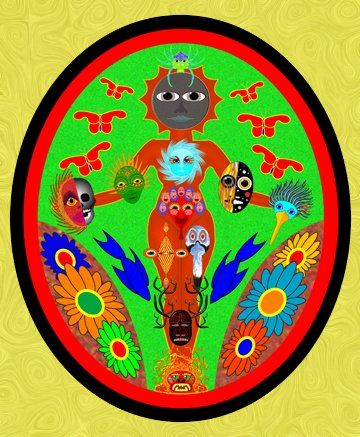
This sequestering was unheard of and caused significant disruption throughout the rest of the Cluster-of-Clusters Nation, dependent on their services. This gathering persisted for two centuries before the Rectification ordeal on the island. A popularized account long after these events described these Invocates as ‘riding the waves’ on the tumultuous surface of the Yeldic portion of the ‘Living Orb.’ They were to work to maintain the failing branch of Island Yelda until they were sufficiently ripe and then to withdraw and carefully observe the subsequent sequence of events. Their labours completed, and the Invocates were immediately disbursed back into the Cluster-of-Clusters Nation with numerous accolades and commendations from their Majastas and Her ministries.
Yeldic Rectifications manifest as a Tree within Tatchlan
Many pondered how the Field Yelda, along with the two classes of Koru Yelda, all appeared to, by various degrees, be augmented by what otherwise was a tragic episode. Subsequent Majastas dynasties and legions of Operants and Invocates followed the development of the Yelda within Tatchlan. In time, the Yeldic formation manifested itself. Since their inception, the Yelda’s development within the Living System had been carefully cultivated by successive Koru Majastas. The ‘Splendid Yeldic Body’ initially appeared as a blossoming mass.
Still, with these refining ordeals, it came to look within Tatchlan as an entity with many arms, usually called a ‘tree.’ The Koru Yelda are on two distinguishing appendages or limbs. The Field Yelda, the Island Yelda and the State Yelda grew out of a succession of later members. Some remain, and others have fallen away. Whatever the configuration, this articulation makes clear all Yelda share the same root, and what happens to one affects all others. This was brought into focus by the Island Yelda.
The Field Yelda branch was further articulated, and a process began in which blemishes on other portions of the living icon migrated to collect on this Island Yeldic sub-limb over time. This was a subtle and incremental process with the earlier population. This simplified version, depicted in the Koru icon here, only partially encompasses the reality within the Living System, which is far more lateral and dynamic. Traditionally, the Yelda were seen as embodied in four prominent members, Sumudin, Kudurapala, Field and State or Danam Yelda (Yakku Yelda are not shown here but are classified as a raw version of Field Yelda). This icon was fashioned partly to illustrate the Island Yelda’s two Rectifications' role in leading directly to the Daman Yelda. This sub limb's blackening and falling away was violent and sudden with the second Rogue Mantle. While this Island Yeldic population was of a far shorter duration, the migration process was orderly and ongoing from beginning to end. The growth of the State Yelda was pronounced to all observers. Its presence caused changes to all portions of the Splendid Yeldic Body. Deep-buried flaws from all other limbs rose to the surface and relocated to the Island Yelda’s segment.
Yeldic Body’s malaise before the Lancing
Despite this concentration, an unease settled on the entire Yeldic manifestation. The body sickened at its toxic presence when this process approached its apogee. Mercifully, this only lasted a brief time before the purging separation of the Island Yeldic appendage. Once it disjoined from the rest of the Splendid Yeldic Body, a thorough purging and restoration occurred, and the State Yelda appendage surged. This ‘lancing’ allowed all accumulations to escape. This evacuated the collected corruption and redistributed all powers and virtues of the Island Yelda, mainly to the emergent State Yelda.
Island Majastas knew their role
While in time, the entire island population came to know of their ultimate fate, the seven members of the second Island Yelda’s Radashum Dynasty knew from the outset what role their society would play in perfecting the Splendid Yeldic Body. Theirs was a bittersweet reign over a planned extinction of one branch to augment the rest of the tree and cause revolutionary growth in its newest sapling. Unlike all other Cluster-of-Clusters National Dynasties, their lot was to perfect their nation for sacrifice. It is presumed this burden played a role in the unusually brief lifespans of these seven Majastas.
Majastas Radashum-Nal
Unlike the Majastas who indiscriminately brought about the island’s First Rectification, the final Yeldic Majastas brought about the Second Rectification, the epitome of sanity and kindness. He could grasp the apparatus within Tatchlan to bring about the Ultimate Panacea for all Yelda early in His reign. He spent the remainder of his life preparing Himself and His island Yelda, for its deployment.
This included nurturing the growing realization and acquiescence of the general population. He produced many balms and comforts as they began to sicken with the accumulated ills attaching themselves to them. He was also determined to ignite his island’s crucible to coincide with the commencement of the ‘State Yelda’ Ceremonial Walk from Dalinantu in Southern Rho-Jashun to the Primary Mountain Circle of Statos-Vey.
He followed their progress and waited for an auspicious occasion (when the State Yelda gathered in the most-ancient Kavan-Kyan caves on Southern Rho-Jashun) to commence the final transfer. This lingering beyond the extinction of most island Yelda is known as His ‘Forty-four days of agony.’ This sacrifice was made to fortify those who would become the Danam Yelda and better assure their success in their ultimate goal of cultivating their eventual Majastas and leading to a viable and sustaining Cluster-of-Clusters Nation occupying the day hours. This would culminate in the Epochal Generational Plan, the ‘Two Majastas Hands.’ Materials found in the Mantle Museum of the Mustamu Dynasty suggest that the Koru Majastas Mustamu-Duvum was in close contact and coordinated efforts with this final Island Yeldic Majastas to bring all this about within the Resplendent Work of Tatchlan.
This icon links these two Lesser Rectifications with the Greater Rectification ending the Primary Epoch. It is distinguished by the presence of what appears to be Yeldic legs with feet facing outward, consumed by fire just before their eclipse. Out of this dissolution, we see the emergence of the Danam Yelda.
Tich-Tushmul Patrimony
Majastas Radashum-Nal also undertook a massive collection and storage of all cultural treasures coupled with extensive cataloguing of each item to instruct the State Yelda. Before the end, He would officially bequeath his island’s legacy to them, storing them in the Promontory Palace and several warehouses in the island capital of Hushukrath. Heretofore, unknown Troves of extraordinary works from the First Island Yelda were uncovered during this Radashum Dynasty’s proprietorship of the island. These now form part of the ‘Tich-Tushmul Patrimony.’ His final act was to take the remarkable step of having himself sprayed and then sealed with several Preservation Cubes, seated on this throne as a memorial. In one hand, He held a note, written in His Hand, reading, ‘A Necessary Correction.’ In his other open palm was a tattoo of the ‘Killing Swath Formation,’ making clear the linkage between this incident and the original Rectification ordeal separating the Primary from the Secondary Epochs. This term is also applied to a unique Mantle Museum in The Plateau of Upata-Shepsus, which displays many ancient wonders on the island. At the exhibit's heart is a Royal Chamber where the Preserved body of the final Tich-Tushmul Majastas, Radashum-Nal, sits enthroned.
Violence, slumber and awakening
When the end came, it was swift. While the vast majority of Yelda on the island peacefully fell asleep and died, a few of the ministry circles were commanded to undergo what can only be described as gruesome termination rituals, often in the presence of huge audiences, both in urban centres and out in the countryside. These extreme rites appear to have opened a door within Tatchlan to conduct the entire population through the Rectification event. Given thousands of Invocates closely followed this whole process within their sequestering inside Thamand Living Mountain Forty-One, it revealed these actions initiated this limited version of the Ultimate Panacea within Tatchlan, showing how the same procedure took place across the Skin of Anu during the original termination of the Primary Epoch.
No other evidence of this terrible ceremony had endured the aftermath of that most-ancient episode. No account persisted through the subsequent Interim period. The Invocates, Operants and Koru Majastas also witnessed the presence of Majastas Radashum-Nal attending to their dissolution before appearing to sit in utter stillness. All the ills gathered from the entire Splendid Yeldic Body were purged, and the wholesome portions of His former subjects merged in new ways with the three traditional Classes of Yelda, along with the emerging Danam Yelda. From the instant the dead branch of the Yeldic ‘tree’ was gone, the rest of the Splendid Yeldic Body grew bright and animate, and what would become the Danam Yeldic bough surged to life. This demonstrated the successful completion of this Lesser Rectification. Overseeing this massive drama was the impassively witnessed considerable presence of Vashivonos, the Primary Face of Grim Necessity. Upon its completion, He was joined by the other eleven Faces, converging for an instant over the Splendid Yeldic Body. They all turned to face downward and spun one revolution in a slow circle as they bore witness before disbursing again. This final Majastas continued to abide briefly before imparting His last gift. Once done, He sank into the Living Orb at the Yeldic Tree’s root.
Taskforce dispatched
A task force was sent to the island. Most of these were Koru representing the Dallamaplan’s Calamity Bureau, who had been stationed on the island before the Rectification. They had withdrawn before the event and had now returned. They reported that the flora and fauna on the island were also adversely affected. Initially, they appeared to be possessed by a delirium, followed by a rapid decline. Most plants and animals were dead or dying by the time the task force completed their work and set fire to the island before leaving. Another unusual feature was the extinction of all Mecalan colonies, fuelling all transit lines on the island and slowing their progress. They found the physical evidence of the peaceful end of the majority and the small minority who tore themselves for the rest. Along with recovering all the Troves set aside for them and, eventually, the Preserved body of Majastas Radashum-Nal - the primary artifact.
Tich-Tushmul Rectification Document
In what appears to be immediately before the commencement of the island’s second Rectification, the island's final Majastas dictated a document now viewed as vital in understanding The Killing Swath and second only to the original Tolku Proclamation.
Four stanzas
In keeping with the now-ancient tradition concerning the reading of the original Tolku Proclamation, Venerable Scholars divided and examined this Rectification Document into four stanzas. Significant material now exists on all and each stanza. Much of this work involves finding links between this and the Tolku Proclamation. Considerable additions have been made to its analysis based on this Rectification Document. Following the presentation of the text, brief summaries of each stanza’s analysis will be provided.
Rectification Document text
General of Interior Command, Vaxo-Mund
Our favoured one! Upon reflection, it occurs to us that we never directed our scribes to fashion letters to you. When you were gone, our elder sister Mustamu-Duvum spoke to us within our Resplendent Work. When lingering upon our island, your Entering our Presence rendered correspondence unnecessary. As we ourselves write, our ministries disburse, and all are in an uproar. The end looms, as does the ground, to one falling from a great height. As our nation expires, we witness the birth of the new Yelda. In pursuance of the maxim of our Majastas predecessors, it is our final resolution to endow them the contents of this our Residence. Similar treasuries are ready to enrich our successors. We go further and offer each thing our island has to our dear ones approaching. By the time you read this, they shall receive most of what we are within Tatchlan.
Tich-Tushmul has known much sorrow
The Primary Epoch was kind to our island. We uncovered much and know sweetness dwelt here for a time. The Foremost Ones survived the first Suvuka Onslaught but fell to the second. Tich-Tushmul witnesses her third extinction. The Tolku fell once, and we Yelda twice. Our ancient Yeldic predecessors established themselves and prospered for four thousand years. They survived the last Burning Blossom to visit Anu before growing their founding Majastas. Remember this! Tich-Tushmul saw the first Yeldic Majastas of Anu! Their Cluster-of-Cluster society remained for six thousand five hundred and eighty years prior to their dissolution. One thousand, five hundred and forty-seven years ago, our grandmothers and their mothers returned. No trace of the first Yelda remained upon this portion of our Skin of Anu. We built upon their bones and the bones of the Foremost Ones before them. The founder of our dynasty arose one thousand, three hundred and sixty-two years ago. Our elder brother, Koru Majastas Mustamu I, known to us as Mustamu-Domla, travelled here to perform an examination by Majastas Touch, declaring our ambiguity continued and our Mother Koru could not resolve it. We discover the resolution and must embrace this bitter ending. Let it be known until it commenced, dignity was maintained, and all acted agreeably in accordance with our commands.
We launch the future
They say ‘pleasure unites and pain separates.’ Our Majastas antecedents ran from this fate. They laboured to diversify our course. We now turn and run towards it. What was named abhorrent, we embrace. The sole path left to us is the Way of Pain. We take action. We separate. Some go to Indatubangas. Most go to our dear siblings. For future greatness, we rend ourselves wide. We withdraw our sheltering hand, allowing raw life its revenge. We enact our own version of the Killing Swath of old. We reduce ourselves from many to one. We turn ourselves backwards and reverse all channels in their courses. Beauty and ugliness, joy and pain, life and death merge within the cauldron we open. Our dissolution becomes their resolution. When all is done here, we shall linger to impart our concluding bequest to posterity before enduring our memorial. Forget not Tich-Tushmul! Forget not our dire necessity! Forget not our endowment to the future!
Let it finally be known only certain Ripe Adults underwent the concluding agony to prepare the way. The rest, along with their children and Venerably Aged, met death in their dreams.
It has begun!
Farewell.”
First Stanza: General of Interior Command, Vaxo-Mund
This pivotal document begins with an unusually affectionate address to a celebrated historic figure serving Koru Majastas Mustamu II Commandant Ministry’s General of the Interior Command, who oversaw the returning task force. The General had been stationed on the island for years. He had a personal relationship with the final Majastas of the Radashum Dynasty. Unlike the Tolku Proclamation, this document, written by the Majastas’s hand, is framed as a personal letter to him. He describes how His Cluster-of-Clusters Nation is approaching its demise. His one sentence, “The end looms, as does the ground to one falling from a great height” has become celebrated in its own right. There is no account of how many subsequent songs, theatrical works, and literature have alluded to it. This is inscribed among other dedications within The Plateau of Upata-Shepsus. It may be found in the heart of the Tich-Tushmul Patrimony, in the deep chamber where His body now presides. He then describes the expected outcome of their sacrifice, the enrichment of what was known as the State Yelda and later the Danam Yelda. He also explicitly states that the Troves of Tich-Tushmul Patrimony, in part, contained in the Dynastic Palace. This is on top of what was known as the Promontory above the capital city of Hushukrath. He goes further and declares the contents of the entire island are consigned to them. This first stanza concludes with the prediction that the most important legacy would be in their hands before these goods are delivered through enrichment from within Tatchlan.
Second Stanza: Tich-Tushmul has known much sorrow
As with the first stanza, this receives a heading meant to summarize its contents. Majastas Radashum-Nal embarks on a brief overview of the island's history, commencing with its first settlement by the Tolku of the Primary Epoch. It includes allusions to the plenty and peace the Primary Epoch Island Tolku enjoyed before the Second Suvuka Onslaught (It may be noted here that we visit this city with Seti and Dine when they witness a novel version of ‘Epic of Ranvartawan’ on stage in this series' first novel, Hesha Vira's Challenge). Like the rest of Anu, the island would have met the same fate during the first Rectification before the Suvuka incursion. He speaks of the first Island Yelda population, enduring the first Burning Blossom Cycles of the Secondary Epoch, and cultivating the first Yeldic Majastas in history. There is also a catalogue of the island's other narrative, a place where “The Tolku fell once, and we Yelda twice.” Reference is made to the first Majastas of the Koru Mustamu Dynasty, referred to as “our elder brother,” and His determination of the second Island Yelda’s ultimate fate. Majastas Radashum-Nal declares He has found the resolution. Now, this fate is embraced, ending with the statement that despite the coming doom, his Cluster-of-Clusters Nation preserved its dignity and maintained order.
Third Stanza: We launch the future
For entirely different reasons, this stanza, like the Sixth Stanza of the Tolku Proclamation, has been the source of no little controversy. This is primarily due to His reference to earlier members of His Radashum Dynasty resisting their role in this Generational Plan. He says they both turned away from it and attempted to modify its course. He says He turned and embraced his role in the “Way of Pain.” While he opens this stanza with a well-known most-ancient adage, this term is nearly unknown in contemporary or later literature. This picture of an irresolute dynasty inspired considerable consternation, given that other indicators inside and outside Tatchlan suggest otherwise. There is a contending school of thought on this material. They interpret these lines as alluding to a series of possible Corrections launched by this dynasty, much in the same way as many dynasties of the Primary Epoch, in an attempt to forestall or mitigate the Ultimate Panacea. In this case, they argue, they were attempting to fortify their Yelda further and ready them for what was to come. There are a few vague allusions to such a series of Corrections among the Tich-Tushmul Trove, including Annotations from the previous Majastas. No evidence of such efforts remains within Tatchlan, where the Second Lesser Rectification transformed the Splendid Yeldic Body, and any evidence was erased. This remains an open question within Yeldic Rectification Studies.
From here, the stanza speaks in the present tense of what steps are now taken and the expected results, making the State Yelda the benefactor. He refers to how his actions allow Raw Life its “revenge” before clearly declaring the connection between what He is initiating and the end of the Primary Epoch. “We enact our own version of the Killing Swath of old.” Using poetic language, He describes how the Island Yelda will end for the State Yelda’s benefit in several ways. He then refers to His fate, suggesting when the process is over, He will make a final gift to the future “before enduring our memorial.” There is some debate about what specific last offering is referred to here. There is no doubt the rest relates to his submission to the process of being transformed into a monument by Preservation Cubes. Such use was not contemplated at this time as the Cubes were primarily employed in sealing significant monuments. However, at this time, early work had been done on perfecting its use to immortalize organic samples. He ends this stanza by imploring the reader not to forget his island, its sacrifice and its role in the future.
Fourth Stanza: Farewell
This is the shortest of the stanzas and clarifies that most of the population did not suffer, and only a select few used their agonies to open the way for the rest. The last four words are traditionally included in this stanza. They say that as He wrote the words, the process began, and bidding farewell.
Forge for Koru, Yakku and Yelda
It is now clear that these Rectification events vitally shaped the Secondary Epoch. The first, along with rectifying many ills that had accumulated within the Living System during the Primary Epoch, launched new civilizations that have come to surpass, in many ways, the original Tolku. The forge made all of the present-day Masters of Anu: the Koru, Yakku and Yelda. While always a tool of cruel requirement, it has been proven to be exceptionally implementable in taking the cumulative developments of hundreds of Aeons and altering them radically and instantly. Current perspectives view these dramatic events as foundational to the existence of the Secondary Epoch.
Lesser Rectifications key to Yeldic development
Due to these events' geographic limits and narrow focus, the two ‘Lesser Rectifications’ were solely beneficial to the Yelda. The two Koru Yelda classes were also impacted. However, their alterations were modest due to their already being sealed in their bond with their Mother Koru. The Field Yelda were the primary recipients of the modifications to the Splendid Yeldic Body within Tatchlan.
Eight Dynasties Generational Plans
As with most Generational Plans, this second Tich-Tushmul population represented only part of a much larger plan. Ever since the dispersal of the Field Yelda across the Marachla Plain at the beginning of the Zudaz dynasty, there had been a series of linked Generational Plans carried out by all Majastas of the seven succeeding dynasties leading to the eighth, the Mustamu. Venerable Scholars and Honoured Historians would later unanimously declare these eight Koru dynasties enacted the most significant and most successful series of Epochal Generational Plans in all history, the establishment of the Danam Yelda as a separate Majastas-producing society. These Generational Plans culminated in the second Lesser Rectification on the island of Tich-Tushmul. There is no evidence earlier dynasties envisaged employing this ultimate tool.
Mundane Yelda dominates Rectification Studies
Most Venerable Scholars, Honoured Historians, Acclaimed Professors and Esteemed Librarians devoting themselves to studying these three events are Mundane Danam Yelda. While their passage marks all descendants of the Tolku, it has come to be known that Danam Yelda holds these events with something akin to affection. The preserved form of Majastas Radashum-Nal is at the core of the collection of island Troves within the museum known as the Tich-Tushmul Patrimony. It is the first of all Mantle Museums. This is located within the Upata-Shepsus Plateau and is a place of pilgrimage and veneration. Facsimiles of many items, including the Majastas Himself, are not uncommon in Ablution Academies and other Mantle Establishments throughout Statos-Vey. Except for the Promontory Palace and the underground chamber where Majastas Radashum-Nal ‘endured’ His preservation are now themselves preserved, the remainder of the island has long since returned to dense jungle with no memory of its fabled past. Nominally a possession of the Koru Cluster-of-Clusters Nation, it was long ago ceded to the Danam Yelda, who now make regular expeditions to view this site of their beginnings. Out of this ongoing attentiveness to this legacy, Danam Yelda led in what has come to be known as ‘Rectification Studies.’
